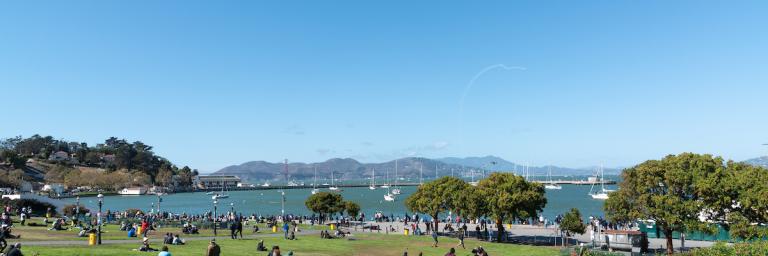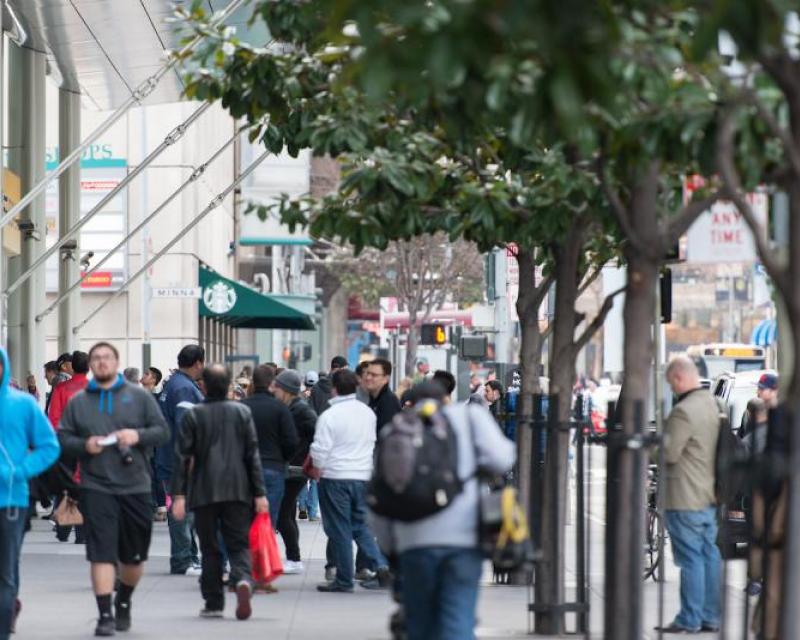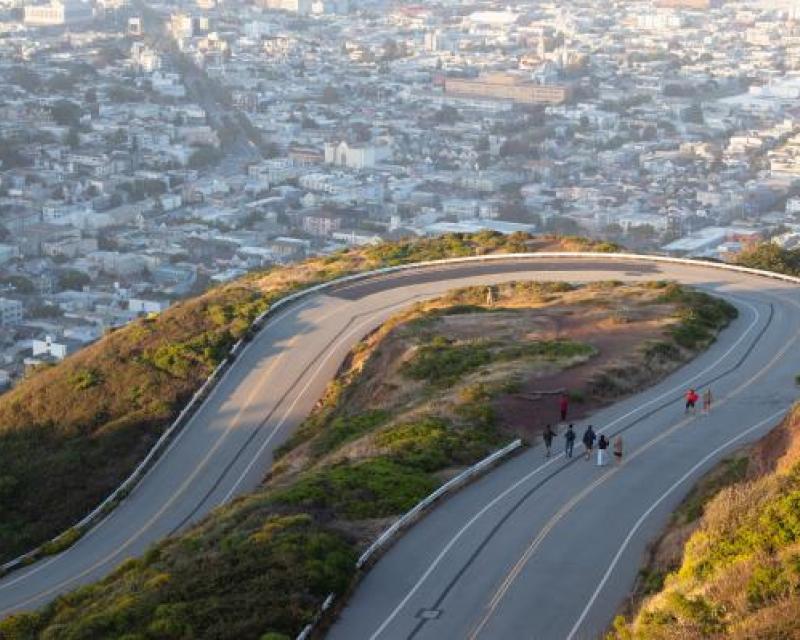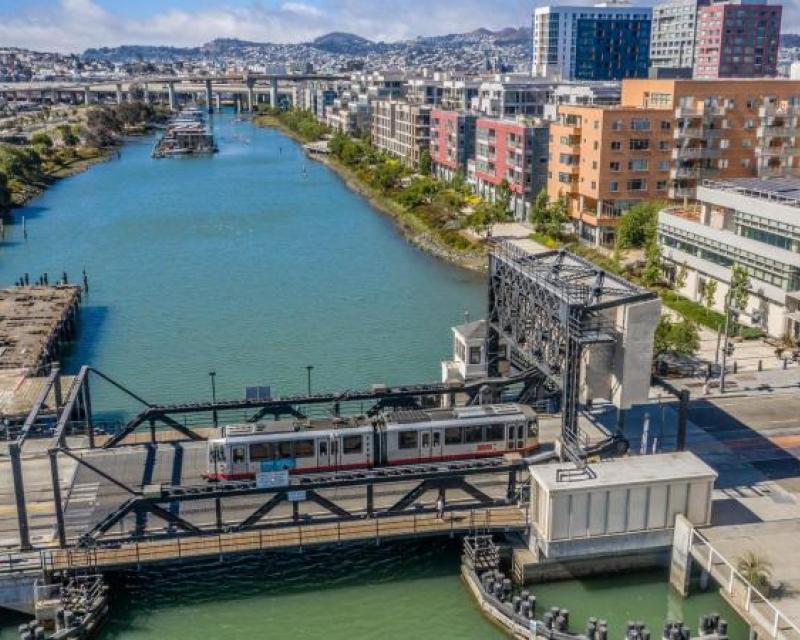Every day, San Franciscans are confronted with the impacts of climate change. Fires, flooding, heat waves, poor air quality; threats to the health of human beings and the planet. In 2019, city leaders declared a climate emergency to take bold and immediate action to address these threats. While San Francisco has been a leader in cutting transportation sector greenhouse gas emissions, it hasn’t yet achieved the transformative change that is needed to meet the urgency of the moment.
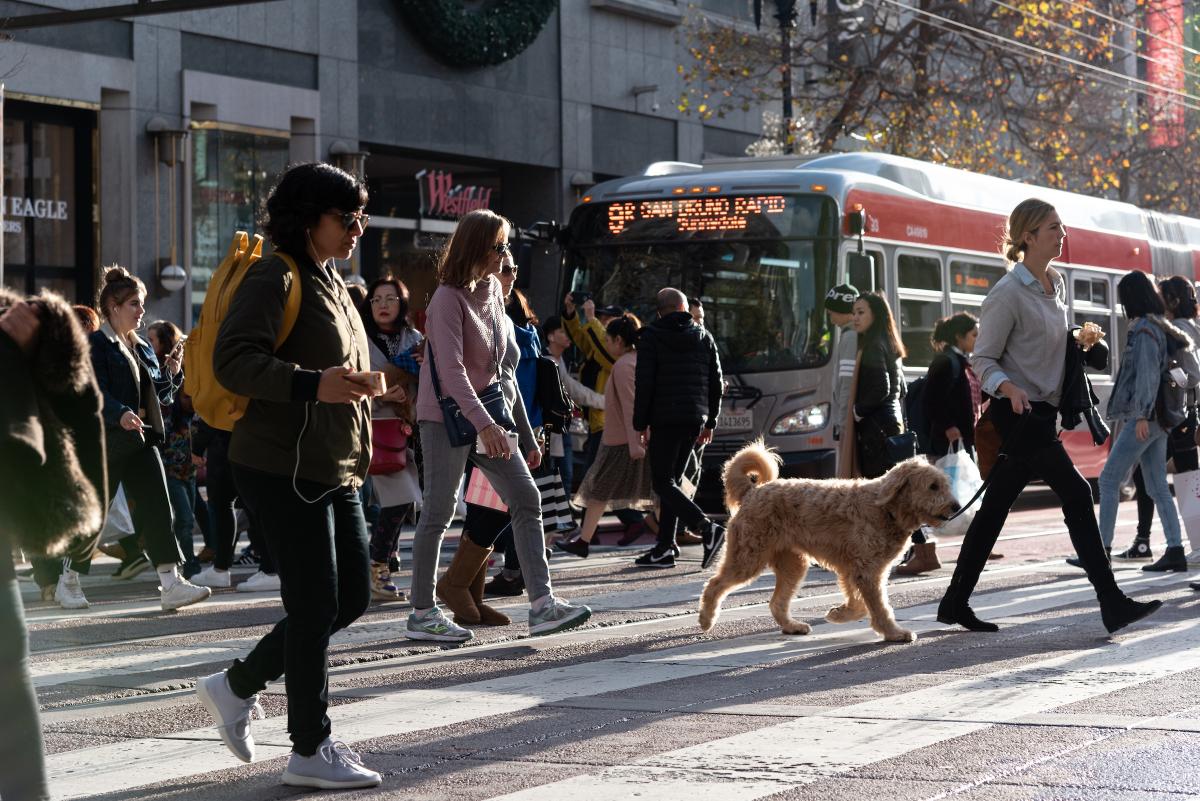
Tackling transportation emissions from cars and trucks will make a meaningful difference in meeting the challenge of the climate emergency. Transportation is one of the largest sources of greenhouse gas emissions in San Francisco, and private cars and trucks produce the majority of those emissions.
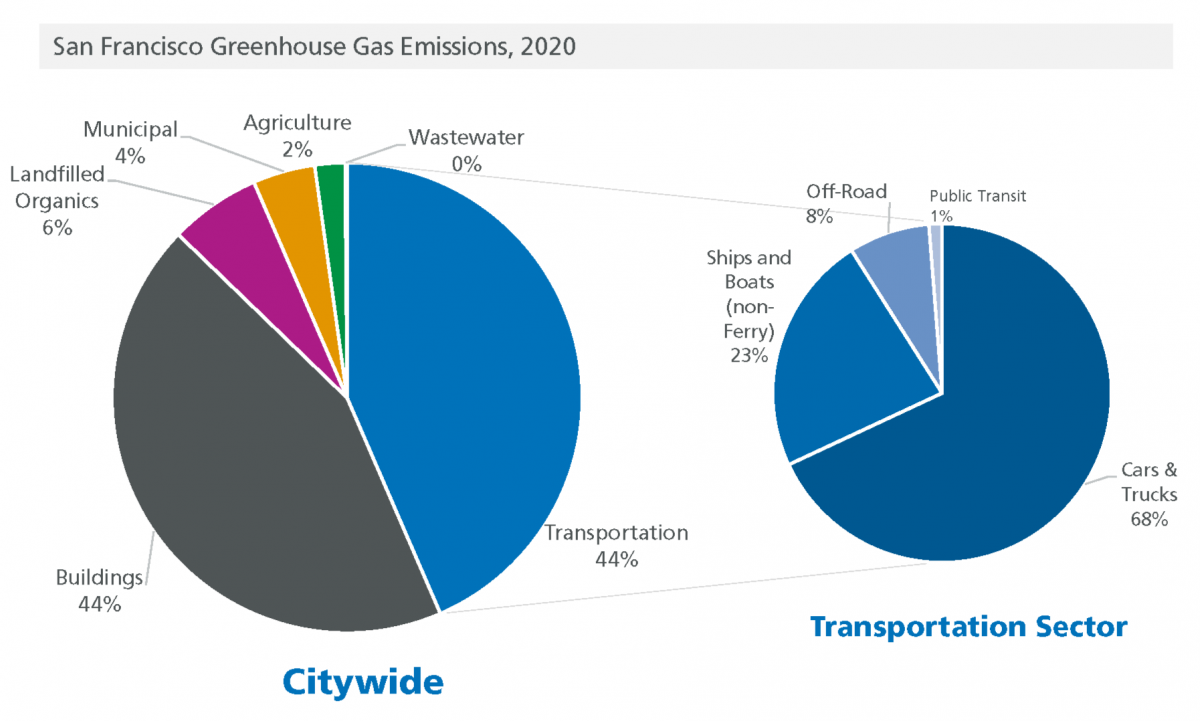
But we can do better! More progress is needed for the city to meet its climate goals: net-zero greenhouse gas emissions by 2040, 80% of trips on low-carbon modes by 2030 and 100% of registered light-duty vehicles to be electric by 2040.
Policies that prioritize street space for public transit and active transportation and shift trips to low-carbon modes are climate action policies. Climate action means making walking, rolling, and using transit cheaper, more convenient, and more attractive than driving. Helping San Franciscans transition away from reliance on cars and trucks, the largest single source of emissions in the city, means giving them better alternatives.
Implementing these strategies will not only lead to emissions reductions, they will also create broader benefits for the community. Access to quality transportation options for everyone is key to realizing these benefits.
- Racial Equity: Repair past harms rather than perpetuating them
- Air quality: Reduce tailpipe pollutants
- Public Health: Increased physical activity and improved mental health
- Safety: Less driving means fewer collisions, injuries, and deaths
- Economic Vitality: Supports commercial corridors and improves personal savings
- Travel Experience: Well-supported transit is safe, sociable and fun
